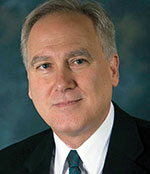Safety Leadership: Foster a culture of accountability

Editor’s Note: Achieving and sustaining an injury-free workplace demands strong leadership. In this monthly column, experts from global consulting firm DEKRA share their point of view on what leaders need to know to guide their organizations to safety excellence.
In today’s world, where many of us tend to work more by ourselves, getting things done is in the spotlight. Accountability is a safety leadership best practice that’s in demand.
At DEKRA, we define “safety” as “controlling exposure for self and others.” We can use this perspective when it comes to accountability. Think of accountability for yourself first, followed by accountability of others. Accountability is a shared practice – the leader and the employee each have a part.
Accountability is helping yourself and others meet commitments. It builds on other best practices. You use vison, credibility, communication, collaboration, action orientation and feedback. All of these practices can set the stage for getting work tasks done and building the culture.
Accountability is a cycle with three major components:
Confirm the employee has the skills and knowledge to deliver on the expectations. A discussion on what the desired outcomes look like ensures we match the employee to the task. Task-matching launches the accountability cycle with the highest likelihood of success.
Stay engaged. Check in on how you and others are doing on the expectations. This monitors progress, which allows you to adjust the course of actions. Monitoring also shows that you care about the activity and the employee. This builds the relationship, which has the added benefit of inspiring others to make extra effort.
Provide consequences. When expectations are met, it’s a cause for celebration. This celebration provides much-needed recognition and reinforces performance, which can then be repeated consistently. You aren’t looking for a brilliant one-time performance – you’re looking for consistent brilliant performances. Recognition of success is the path to consistency.
The clearer you are on what you want, the greater the likelihood you’ll get it. Don’t assume others know what you want. Be specific. Engage in a two-way discussion using active listening skills.
When expectations aren’t met, however, you must give guidance feedback to get the activity back on track. Providing guidance feedback is a communication skill that fully uses other leadership best practices.
Formal discipline can be part of providing consequences, which can be part of accountability. Discipline needs to be done with skill. The key to preserving the culture when formal discipline is used is to make sure everyone knows the ground rules ahead of time. Make sure people can do what you’re asking of them and be consistent with the ground rules. They apply to everyone all of the time.
A major pitfall with accountability is unclear expectations. Many times, we assume expectations are understood. Check your assumptions. Have explicit discussions on expectations to minimize misunderstandings.
Once the goal is set and understood, another pitfall is insufficient follow-up along the way. For many of us, once goals are set, we get pulled into the urgency of the day and miss opportunities to help others succeed. Checking in along the way and monitoring progress are helpful in building accountability.
Applying consequences for either desired performance or non-performance needs to be consistent. Otherwise, you can come across as being unfair and damage the culture.
The benefits of accountability are building your capability to get things done yourself, enabling the accomplishments of others and positively changing the culture in your workgroup.
What can I do right now?
- Be clear with what you’re asking for from your key stakeholders.
- Ensure the person is positioned for success.
- Conduct frequent two-way, mutually beneficial check-ins.
- Celebrate success as part of your passion for people.
- Redirect using collaborative means.
This article represents the views of the author and should not be construed as a National Safety Council endorsement.
 Paul Angelo, principal consultant at DEKRA (dekra.us), employs his more than 30 years of consulting and program management experience to analyze, design, and implement culture and safety leadership improvement processes that help his clients make a step-change in safety performance. He’s a skilled leadership coach who provides one-on-one training on transformational leadership.
Paul Angelo, principal consultant at DEKRA (dekra.us), employs his more than 30 years of consulting and program management experience to analyze, design, and implement culture and safety leadership improvement processes that help his clients make a step-change in safety performance. He’s a skilled leadership coach who provides one-on-one training on transformational leadership.
Direct to your inbox: Sign up to be notified in email about new "Safety Leadership" columns.
Post a comment to this article
Safety+Health welcomes comments that promote respectful dialogue. Please stay on topic. Comments that contain personal attacks, profanity or abusive language – or those aggressively promoting products or services – will be removed. We reserve the right to determine which comments violate our comment policy. (Anonymous comments are welcome; merely skip the “name” field in the comment box. An email address is required but will not be included with your comment.)

